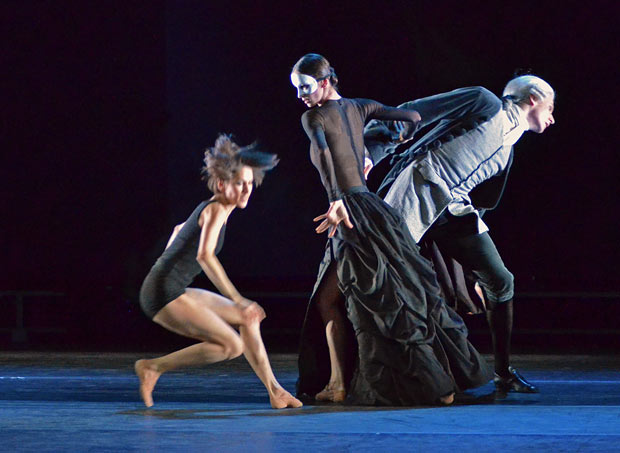
Mikhailovsky Ballet
Multiplicity. Forms of Silence and Emptiness
London, Coliseum
6 April 2013
Gallery of 20 Multiplicity pictures by Dave Morgan
www.mikhailovsky.ru
We have seen earlier in this brief season by the Mikhailovsky Ballet how much the company has improved at every level of the classical repertoire since their last visit to London in 2010. Although the three classics presented at the London Coliseum over the past fortnight have all been opened by the star duo of Natalia Osipova (who is to join The Royal Ballet later this year) and Ivan Vasiliev, it has been impressive that the company as a whole (from corps de ballet to leading soloists) has delivered a consistently high quality of support to this stellar pair.

© Dave Morgan. (Click image for larger version)
The artistic director, Nacho Duato, has saved his own work for the season’s final weekend, leading off with the enigmatically titled Multiplicity. Forms of Silence and Emptiness. His first full-length ballet was made for the City of Weimar when it became the inaugural European Capital of Culture in 1999 (prior to that they had just been Cities of Culture), and it now provides further evidence of the significant improvement in the Mikhailovsky’s form and the breadth of its repertoire. It comes to London with serious pedigree having been responsible for Duato winning the Benois de la Danse. His choreography is busy, occasionally predictable, but more often inventive, strong on musicality and both remarkably fluid and emotionally charged; stretching the dancers both literally and in terms of their artistic diversity. It also makes the whole ensemble into the star turn and not merely a supporting cast for the headline act.
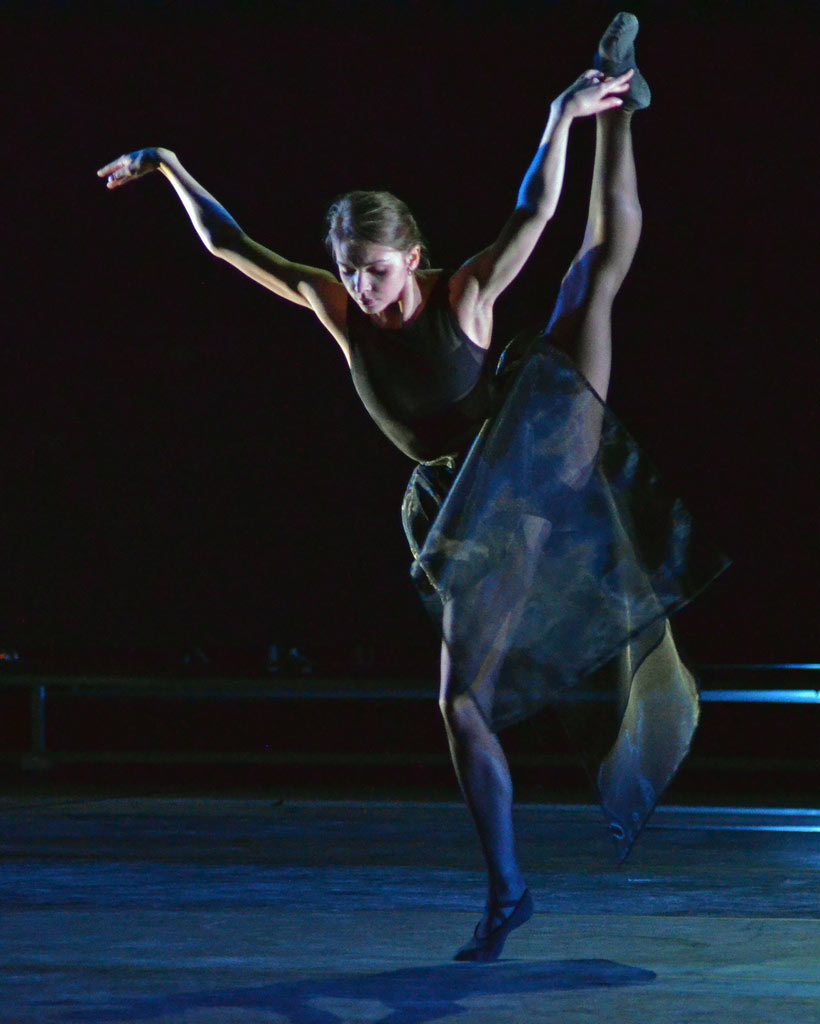
© Dave Morgan. (Click image for larger version)
There is little point in looking for narrative in any Duato work but this is as close as he gets in that it concerns the life and work of Johann Sebastian Bach. It is also relatively unique in having an identifiable character (Bach himself, played by Marat Shemiunov). We didn’t get the opening scene, in which Duato would come on stage to perform a solo for the purpose of deferentially asking Bach’s permission to create dance to his music because this is omitted if the choreographer doesn’t perform it in person. Instead, Bach emerges on stage in his powdered white wig and 18th century frockcoat, standing with his back to the audience. When the curtain rises we find an “orchestra” of 18 dancers seated on triangular stools (looking like the footrests with which children have their feet measured in old-fashioned shoe shops) and the composer starts to conduct them into dynamic movements (big upward leaps, simulated trumpet playing) to the opening chorus from Aeolus Propitiated. From playing conductor, Bach then becomes the cellist “performing” the Prelude from his Cello Suite No 1 in G Major; only the instrument imaginatively – and erotically – caressed, twisted and turned is not made of wood but flesh and blood (Sabina Yapparova). Later Bach turns onlooker, voyeurishly wandering among the performers or watching from a series of scaffolding platforms at the rear of the stage, designed by Iraqi architect, Jaffar Chalabi, to look like a musical stave.

Balanchine said that “Dancing is music made visible” and Duato’s choreography is a distillation of creating visible expression to interpret Bach’s greatest hits. If you can imagine the kaleidoscopic bubble patterns or wave forms that computers use to represent music then Duato has conjured an equivalent in human form. In fact, from the opening scene onwards the dancers have several allegorical purposes: as orchestra, as instruments or to provide biographical detail; but mostly they seem to be musical notes, plucked from the dominating stave structure to become this “music made visible”. The biographical references are intriguing and I suggest that many are there to be spotted. One allusion I enjoyed was a fencing sequence for six men that was at least suggestive of Bach’s attempted duel in Weimar with a bassoonist (in 1705, when aged 20) over a slanderous remark.
There are 22 tracks on this “greatest hits album”` and, perhaps because Duato couldn’t quite bring himself to create a holistic full-length ballet, he retains the impression of at least a work in two halves by giving each part a different name. While the style of both halves is similar, musically they are separated by strings and orchestral suites dominating the Multiplicity section and organ fugues providing a sombre auditory backdrop for the Forms of Silence and Emptiness. If the former dealt with biographical imprints from Bach’s life and work, the latter focused on a steady passage of decline towards blindness and death.

© Dave Morgan. (Click image for larger version)
As the embodiment of the angel of death, the divine Polina Semionova, dressed in black, with a tight, transparent mesh bodice and wearing a white mask, patrolled the work (not unlike the subliminal presence of the Messenger of Death in MacMillan’s Song of the Earth and there were several moments, which brought that seminal ballet back to mind). The penultimate musical composition was extracted from The Art of the Fugue, which was incomplete at Bach’s death and published posthumously; but the most beautiful image rested in the visualisation of the Aria da Capo from the Goldberg Variations in a memorable final ascent of the dancers, climbing up through the musical stave as if notes returning home, while the composer lies at the feet of Death’s messenger.












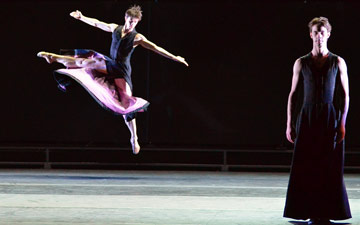
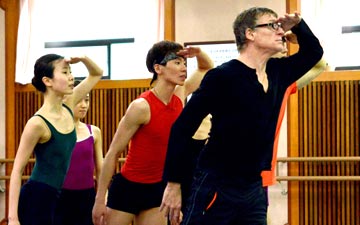
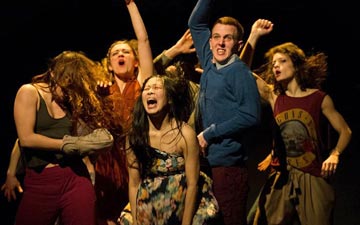

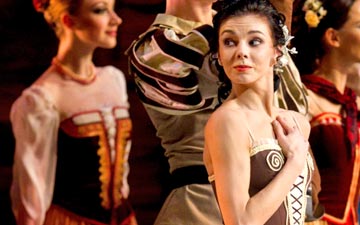
You must be logged in to post a comment.